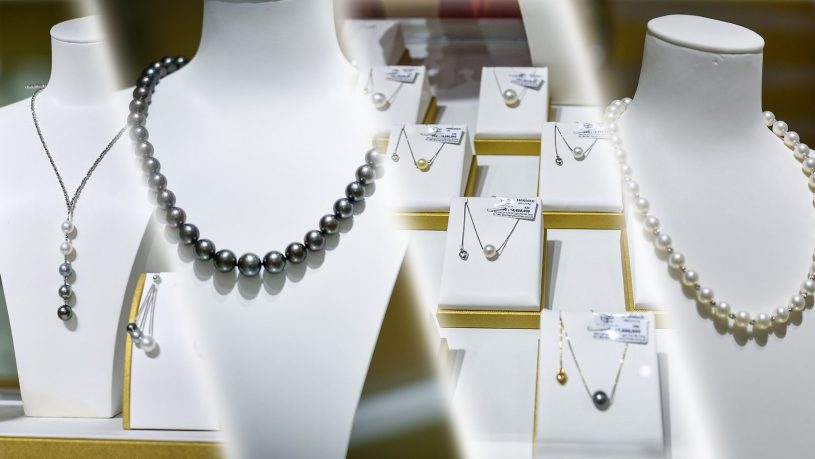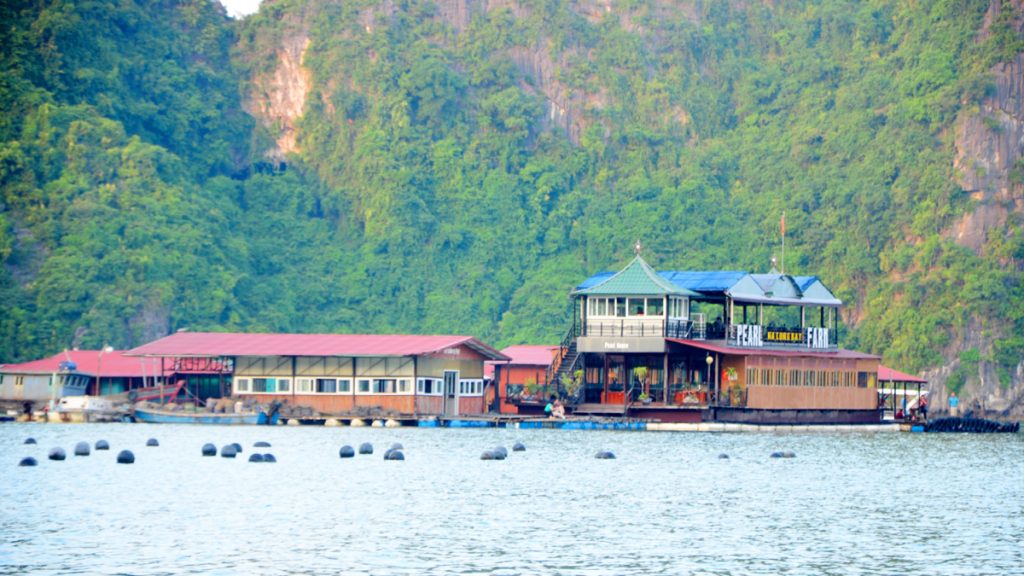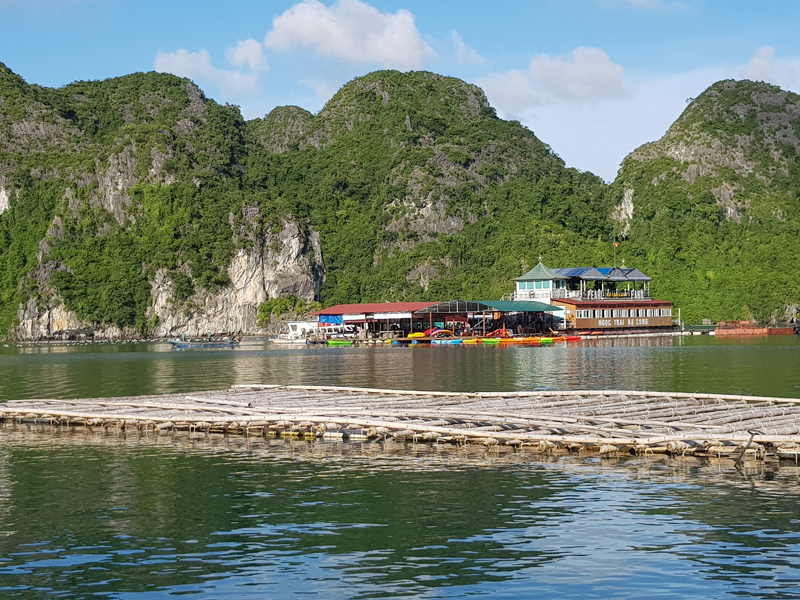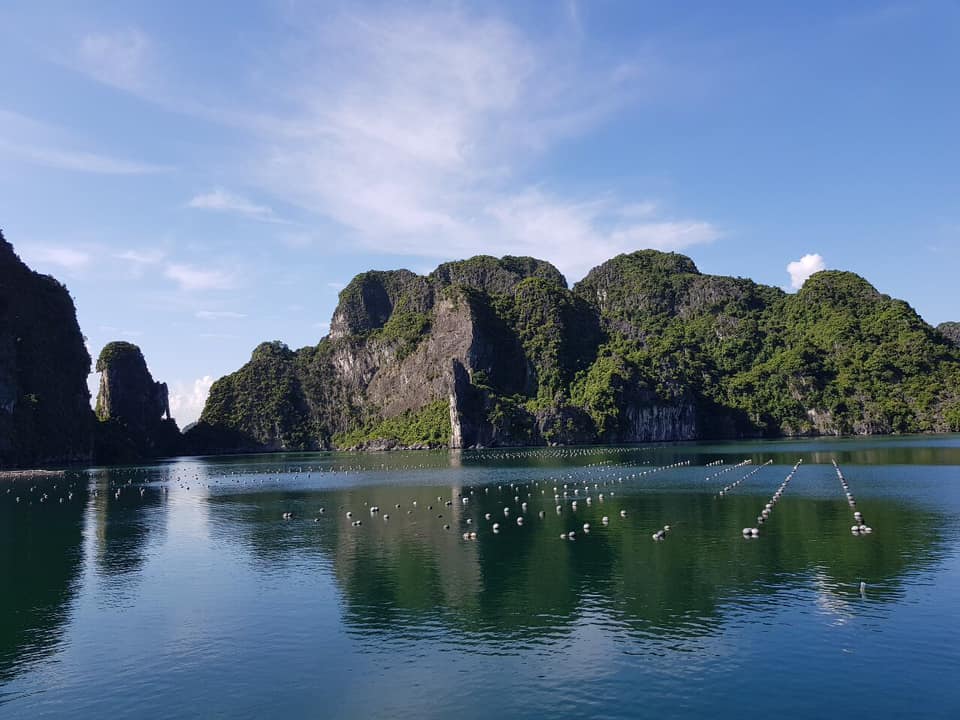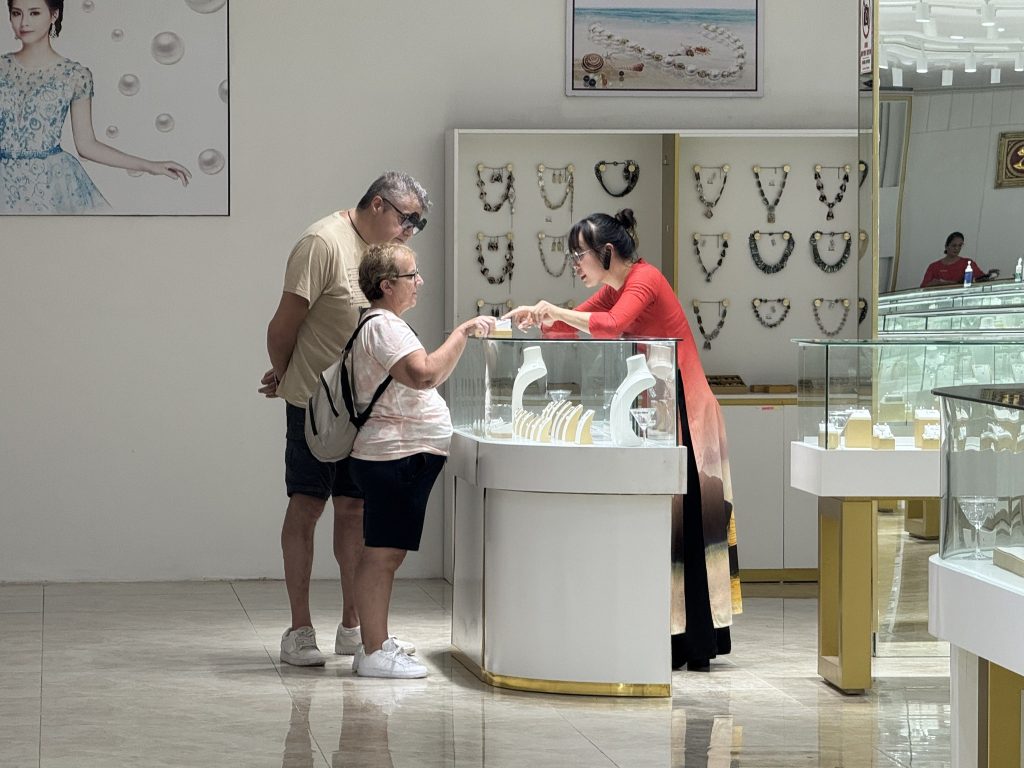Contents
- 1 Introduction to Halong Bay Pearl Farms
- 2 The Pearl Cultivation Process in Halong Bay
- 3 From Initial Implantation to Harvest
- 4 The Rich Heritage and Techniques of Halong’s Pearl Farming
- 5 Visiting the Halong Bay Pearl Farms: A Unique Experience
- 6 The Future of Pearl Farming in Halong Bay
- 7 Conclusion for Halong Bay Pearls
Halong Bay pearls are highly sought after by tourists who love shopping for unique, high-quality jewelry that reflects the beauty and craftsmanship of Vietnam.
Halong Bay is renowned not only for its breathtaking limestone formations, pristine beaches, and unique culture but also for being home to one of Vietnam’s most intriguing and unique industries – pearl farming. Located in a secluded area of Halong Bay, Tùng Sâu Bay, also known as Van Don, is a picturesque spot that attracts tourists from around the globe, especially from Europe. This bay, with its peaceful and primitive scenery, is home to Halong Pearl JSC’s pearl farms, often called a “living museum” where visitors can explore the delicate art of pearl cultivation.
Introduction to Halong Bay Pearl Farms
Set amidst towering islands and sheltered from rough waters, Tùng Sâu Bay provides ideal conditions for cultivating pearls. At this unique location, visitors have the opportunity to learn firsthand about the intricate pearl farming process, from initial stages of cultivation to final harvesting. Pearl farming in Halong Bay is a refined practice combining traditional techniques with modern Japanese technology to produce pearls of high quality, sought after both domestically and internationally.
As part of Halong Pearl JSC’s business model, the farm not only harvests pearls for commercial use but also operates as a tourism attraction. The on-site museum showcases the entire life cycle of pearl farming, providing a glimpse into the delicate work that transforms these natural gems from raw oysters into dazzling jewelry. This fusion of commerce and tourism allows guests to gain a deep appreciation for the art, science, and history of pearl farming in Halong Bay.
The Pearl Cultivation Process in Halong Bay
Halong Bay Pearls farming is a labor-intensive process that requires precision, patience, and a deep understanding of marine biology. In Halong Bay, the Tùng Sâu Bay area is known for cultivating four main types of pearls: Ma Thi, Thick-Shelled, Long-Shelled, and Jamson pearls. These varieties are highly valued and often exported, contributing to the regional economy.
To create a pearl, the process begins with carefully selected oysters, called mother oysters, which are typically around two years old. These oysters are grown in specialized cages in the water, where they are nurtured under specific conditions to ensure their health and viability. Water temperatures, salinity, and overall water quality in Halong Bay, particularly in Bai Tu Long Bay, are optimal for pearl oyster farming.
Pearl cultivation starts with a skilled technician implanting a nucleus, usually a small bead made of synthetic material, into the oyster. This step requires exceptional accuracy, as even the slightest deviation can result in a malformed or valueless pearl. The technician uses specialized tools, including forceps to open the oyster, a needle to position the bead, and a tiny instrument to hold the oyster open during the operation. Once implanted, the oyster naturally begins to secrete nacre—a substance composed of calcium carbonate – that layers over the bead, gradually forming the pearl.
From Initial Implantation to Harvest
Once the implant is complete, the oyster is carefully returned to a cage to heal and begin producing nacre around the nucleus. During the initial recovery period, oysters are monitored to ensure survival, as this stage can be delicate. After approximately two weeks, the oysters are evaluated, and any that have expelled their nuclei or died are removed. The surviving oysters are transferred to deeper water cages for long-term growth, where they continue to form layers of nacre over one to three years.
As time passes, the oysters are inspected periodically, and eventually, they reach the desired level of nacre thickness. This gradual accumulation of nacre, along with environmental factors like water temperature and salinity, influences the pearl’s color, shape, and luster. The experienced pearl farmers of Halong Bay consider these elements crucial to producing high-quality pearls that stand out in the competitive global market.
The Rich Heritage and Techniques of Halong’s Pearl Farming
Historically, Halong Bay has been recognized as an ideal location for pearl farming, given its unique climate and water conditions. The techniques used here date back centuries, with local artisans refining and adapting them to enhance both quality and production efficiency. While traditional methods were once labor-intensive and produced limited results, advancements in scientific techniques now allow farmers to increase output while maintaining the exceptional quality of Halong pearls.
The Ma Thi oyster, for instance, thrives in waters with high salinity levels, making Halong Bay’s waters, particularly Bai Tu Long Bay, a perfect habitat. The Ma Thi oyster is notably sensitive to environmental changes, yet when cultivated correctly, it yields some of the most lustrous and colorful pearls in Vietnam. The meticulous care required for each type of oyster—from salinity levels to temperature monitoring—demonstrates the dedication of Halong’s pearl farmers to this delicate art.
Today, Halong Bay’s pearl farms rely on a blend of traditional expertise and Japanese technology to achieve consistently high-quality results. The farming process is more efficient, reducing the time required for pearl maturation and increasing annual yields. This dedication to sustainable farming practices benefits both the local economy and the environment.
Visiting the Halong Bay Pearl Farms: A Unique Experience
Visitors to the Halong Pearl farms are offered a fascinating journey through the pearl cultivation process. The farm has several attractions, including a guided tour through the different stages of pearl production. Tourists can observe the careful selection of oysters, the delicate implantation of nuclei, and the final harvesting of the pearls. The farm’s museum showcases a collection of handcrafted jewelry and provides insight into the various pearl qualities, including size, shape, color, and luster.
The beauty and elegance of Halong pearls are distinguished by several quality indicators. These include the pearl’s size, shape, surface smoothness, refractive index, and the uniformity of the pearls within a set or necklace. Visitors have the opportunity to examine these factors up close, gaining a new appreciation for the craftsmanship involved in each piece. Halong Pearl JSC’s on-site store offers a range of jewelry crafted from locally cultivated pearls, allowing visitors to take home a unique souvenir that reflects Halong Bay’s natural beauty and artisanal heritage.
The Future of Pearl Farming in Halong Bay
As a testament to the region’s dedication to preserving traditional craftsmanship while embracing sustainable practices, Halong Bay has become a beacon for eco-conscious tourism. Pearl farming here operates year-round, making it a bustling industry within the bay. The region’s artisans continuously innovate to improve quality and increase output, positioning Halong pearls as a competitive product within Southeast Asia’s luxury markets.
The careful craftsmanship combined with the bay’s ideal natural conditions allows Halong pearls to rival those from other prominent regions like Japan and the Philippines. Each pearl produced here is a testament to the natural harmony between local tradition and environmental stewardship, as Halong’s pearl farmers have created a sustainable and eco-friendly model for future generations.
Conclusion for Halong Bay Pearls
A visit to Halong Bay pearl farms is a memorable experience that offers a glimpse into a unique industry, beautifully intertwined with the region’s natural landscape and cultural heritage. From the tranquil waters of Tùng Sâu Bay to the meticulous hands of the artisans, every step of the pearl-making journey showcases the dedication and skill required to produce these stunning gems. For those exploring Quang Ninh Privince and Halong Bay, the pearl farms provide an enchanting side of Halong that goes beyond its scenic vistas—delving into a world of artistry, patience, and tradition.
In Halong Bay, the vibrant pearl industry reflects the region’s commitment to preserving and sharing its heritage. It is a fascinating example of how tourism and traditional industries can thrive together, contributing to the local economy and inviting visitors to witness firsthand the beauty and craftsmanship behind each Halong pearl. Whether you’re an enthusiast of jewelry or simply looking to experience something unique, the pearl farms of Halong Bay will undoubtedly leave a lasting impression.
Typically, our Halong Bay tours do not include a stop at the Halong Bay Pearl Shop for shopping. However, if you are interested in visiting the pearl farm to learn about the intricate pearl cultivation process or shop for authentic pearls, please feel free to inform our tour manager. We would be more than happy to arrange a customized tour that includes a stop at the pearl farm, providing you with a unique glimpse into this fascinating local industry.
I love traveling and have been working in tourism industry since 1996. Vietnam is my homeland so I would like to share with you my experience to discover this destination best!

